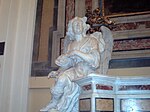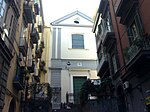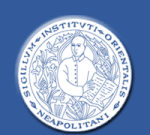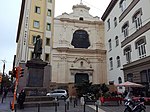Zoological Museum of Naples
1811 establishments in Italy1811 establishments in the Kingdom of NaplesAC with 0 elementsItalian museum stubsMuseums established in 1811 ... and 2 more
Museums in NaplesNatural history museums in Italy

The Zoological Museum of Naples, located in Naples, south Italy, was founded by Gioacchino Murat in 1811. The first curator was Luigi Petagna. The founding collections were those of the Royal Bourbon Museum and the private collection of Giuseppe Saverio Poli. Later curators were: Giosuè Sangiovanni, Achille Costa (from 1860), Francesco Saverio Monticelli (from 1900). the museum was badly damaged in the Second World War but with Mario Salfi as Curator, it was restored between 1948 and 1970. The museum is part of the University of Naples Federico II as Centro Musei delle Scienze Naturali. See PDF.
Excerpt from the Wikipedia article Zoological Museum of Naples (License: CC BY-SA 3.0, Authors, Images).Zoological Museum of Naples
Via Mezzocannone, Naples Porto
Geographical coordinates (GPS) Address Nearby Places Show on map
Geographical coordinates (GPS)
| Latitude | Longitude |
|---|---|
| N 40.846388888889 ° | E 14.256388888889 ° |
Address
Università "Federico II" - Plesso Mezzocannone 8
Via Mezzocannone
80138 Naples, Porto
Campania, Italy
Open on Google Maps










